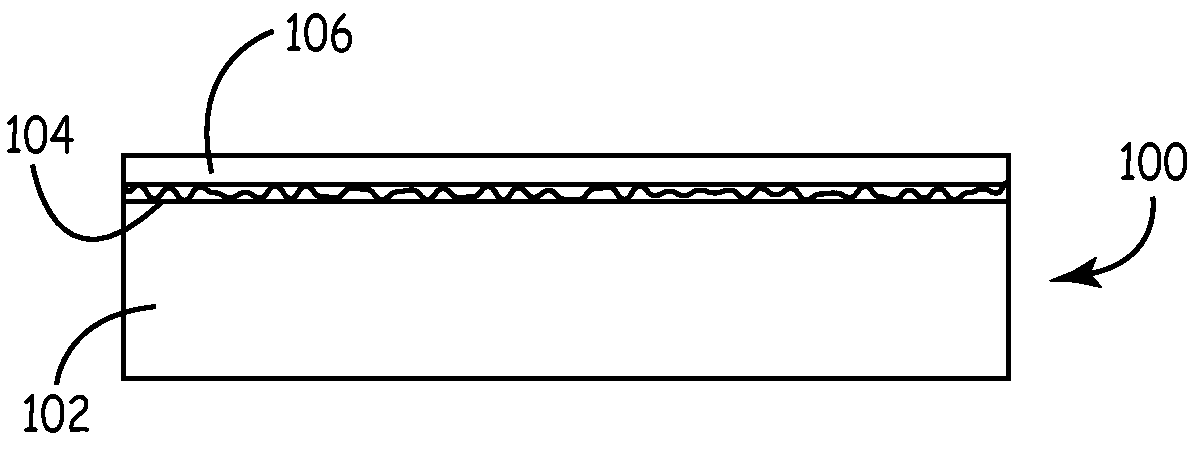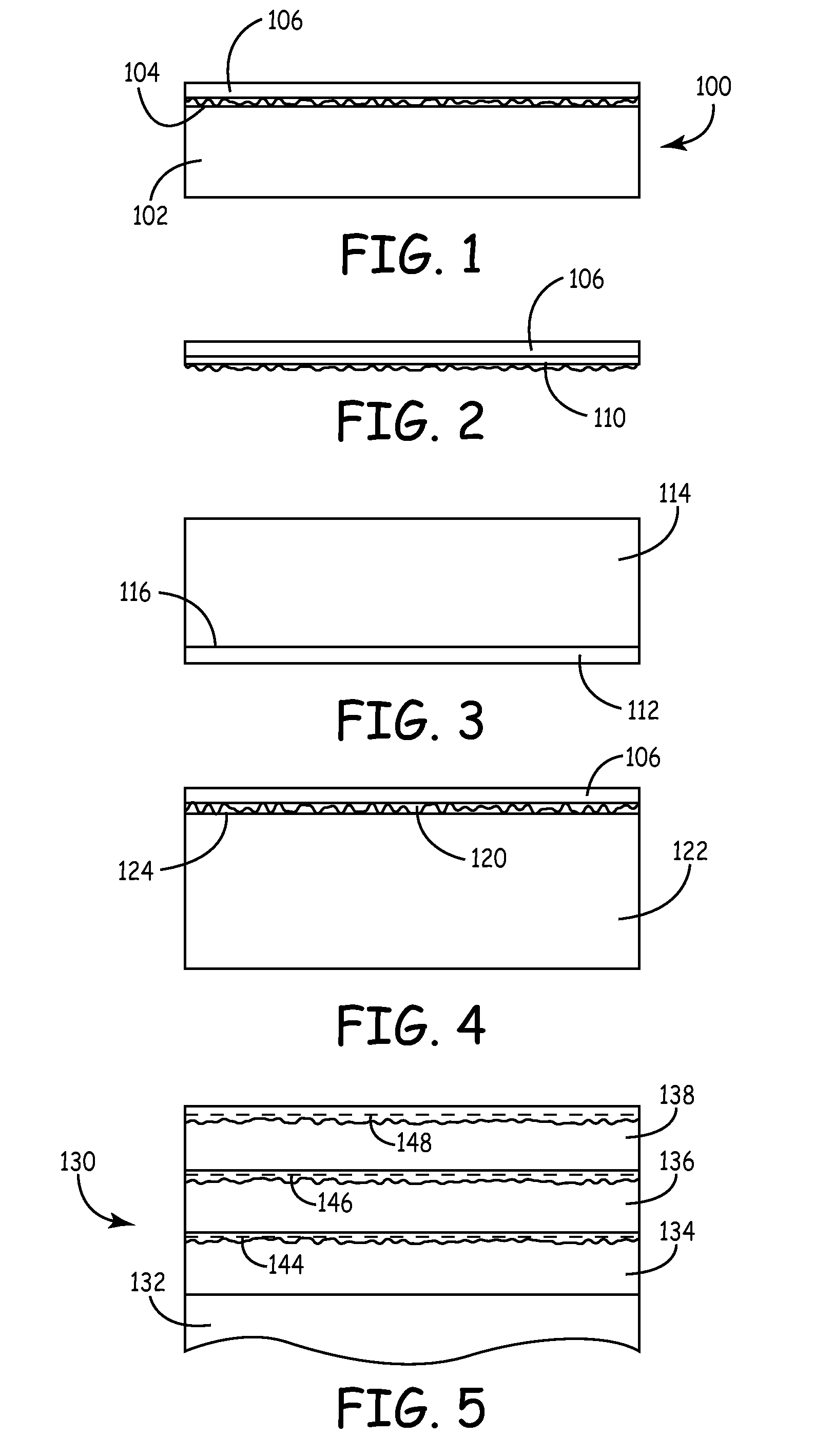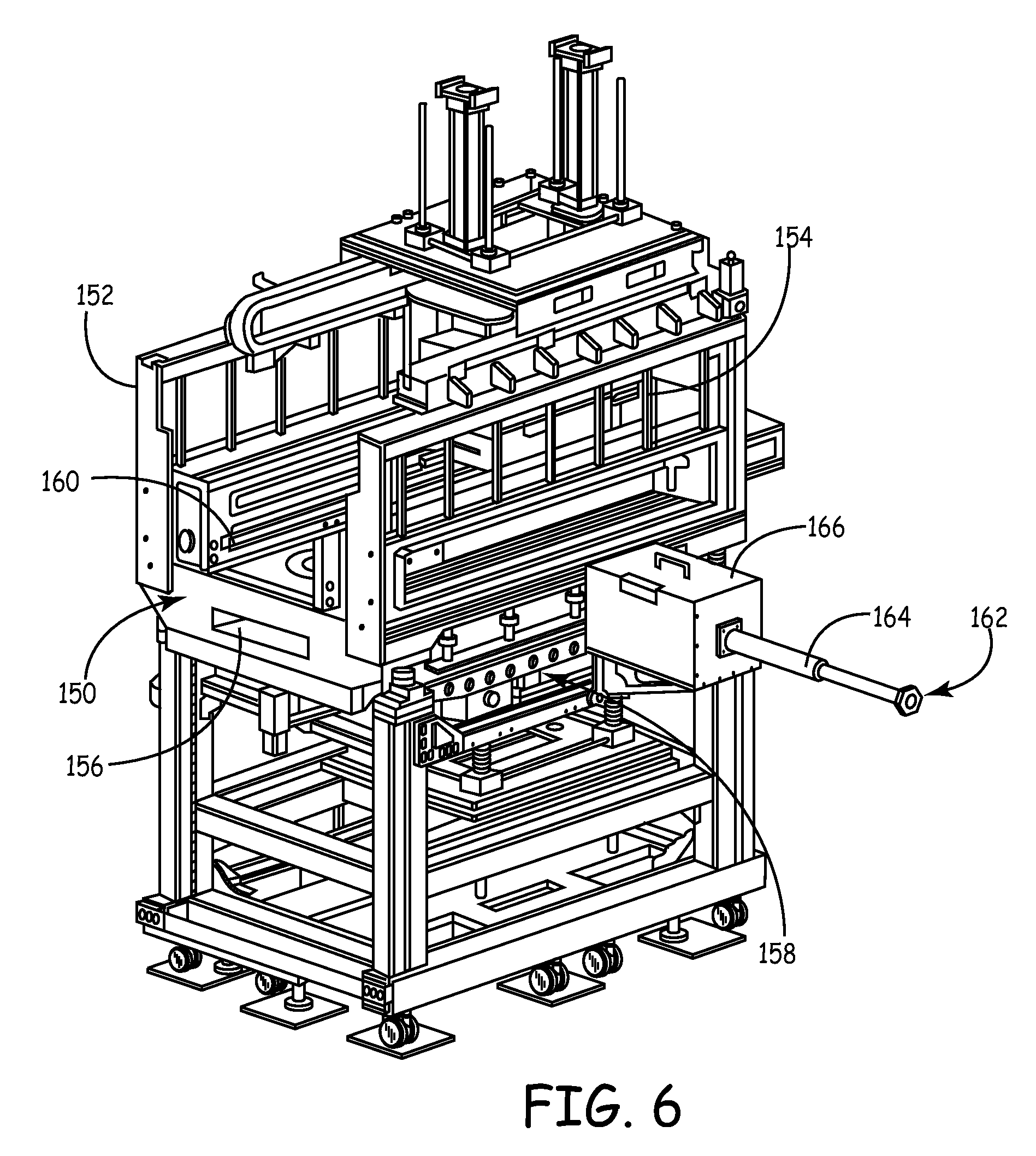Layer transfer for large area inorganic foils
a technology of inorganic foils and layers, applied in the direction of transportation and packaging, coatings, chemistry apparatuses and processes, etc., can solve the problems of less desirable non-renewable energy sources
- Summary
- Abstract
- Description
- Claims
- Application Information
AI Technical Summary
Benefits of technology
Problems solved by technology
Method used
Image
Examples
example 1
LRD™ Soot Deposition with CVD Stabilizing Material
[0128]This example shows the results of alternating LRD™ porous deposition with CVD dense deposition. In data not shown, 150 micron porous particulate release layer of SiO2 deposited onto a silicon carbide substrate have been observed to delaminate partially upon the processing of a silicon foil deposited on top of the release layer. This uncontrolled delamination and fracturing of the foil is solved through the additional release layer manipulation described in this example and the following examples.
[0129]Referring to FIG. 11, a scanning electron micrograph is shown of a cross section of a multiple layered release layer formed on a silicon carbide substrate. This structure was formed from the alternating deposition of a porous, particulate SiO2 layer using LRD™ deposition followed by a SSAP-CVD deposition of a dense SiO2 material. The amount of material deposited by SSAP-CVD was approximately corresponding to a 2 micron thick dense...
example 2
Flame Densification of SiO2 Soot
[0131]This example demonstrates the stabilization of an LRD™ deposited soot through the use of an oxygen-acetylene flame.
[0132]The flame was generated with an oxyacetylene hand torch. The flame was scanned by hand across a 200 mm×200 mm square tile. The flame was passed over the tile in 1, 2, 3 or 4 passes to evaluate the effects of the flame. The initial soot as deposited was about 190 microns thick. Following the passage of the flame over the soot, the layer had thicknesses ranging from about 35 microns to about 43 microns. Within the variation in the thicknesses due to experimental variation, the porous layer thickness was approximately the same after one pass of the flame or with multiple passes of the flame. SEM micrographs of the cross section of porous layers without flame treatment is shown in FIG. 13, and cross sectional views of the soot after the flame treatment SEM are shown in FIGS. 14-16 based on 1, 2, or 3 passes of the flame, respectiv...
example 3
Silicon Foil Deposition onto a Flame Densified Release Layer
[0133]This example shows the properties of a silica, SiO2, foil deposited onto a release layer following flame stabilization, and similar foils deposited onto a soot layer without flame densification.
[0134]A dense foil or SiO2 was deposited using SSAP-CVD onto a porous release layer also comprising SiO2. Referring to FIG. 20, an SEM cross sectional view of a 46.8 micron thick SiO2 foil is shown on a porous SiO2 layer deposited by LRD™. The release layer fractured to form a 51.9 micron thick layer from an as deposited approximately 150 micron thick porous layer.
[0135]Referring to FIG. 21, an SEM cross sectional view of a 47.3 micron dense layer of SiO2 is shown on a porous release layer with a thickness of 25.5 microns. The dense layer was deposited with SSAP-CVD. The release layer in FIG. 21 was formed by LRD™ and treated with an oxyacetylene flame to densify the as deposited soot. The dense SiO2 layer in FIG. 21 has a smoo...
PUM
| Property | Measurement | Unit |
|---|---|---|
| thickness | aaaaa | aaaaa |
| thickness | aaaaa | aaaaa |
| thickness | aaaaa | aaaaa |
Abstract
Description
Claims
Application Information
 Login to View More
Login to View More - R&D
- Intellectual Property
- Life Sciences
- Materials
- Tech Scout
- Unparalleled Data Quality
- Higher Quality Content
- 60% Fewer Hallucinations
Browse by: Latest US Patents, China's latest patents, Technical Efficacy Thesaurus, Application Domain, Technology Topic, Popular Technical Reports.
© 2025 PatSnap. All rights reserved.Legal|Privacy policy|Modern Slavery Act Transparency Statement|Sitemap|About US| Contact US: help@patsnap.com



